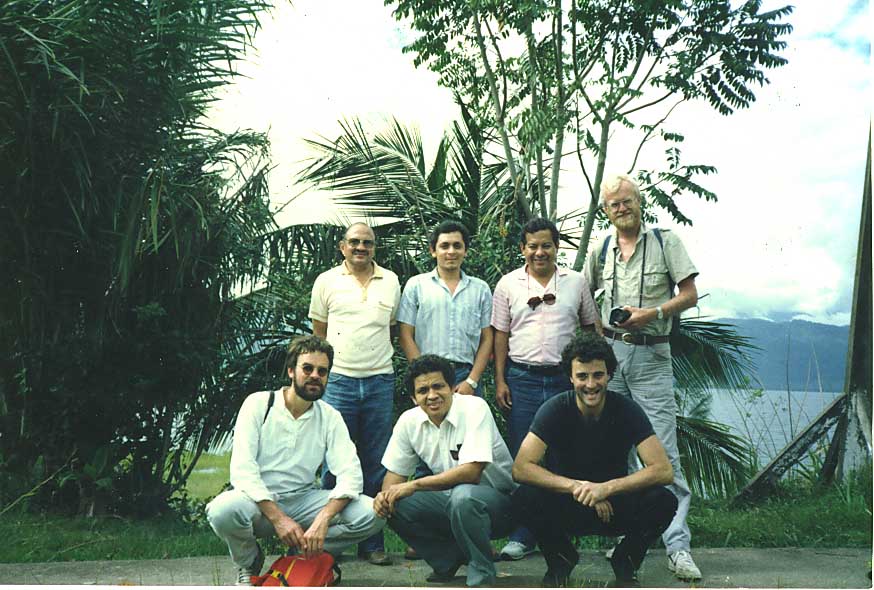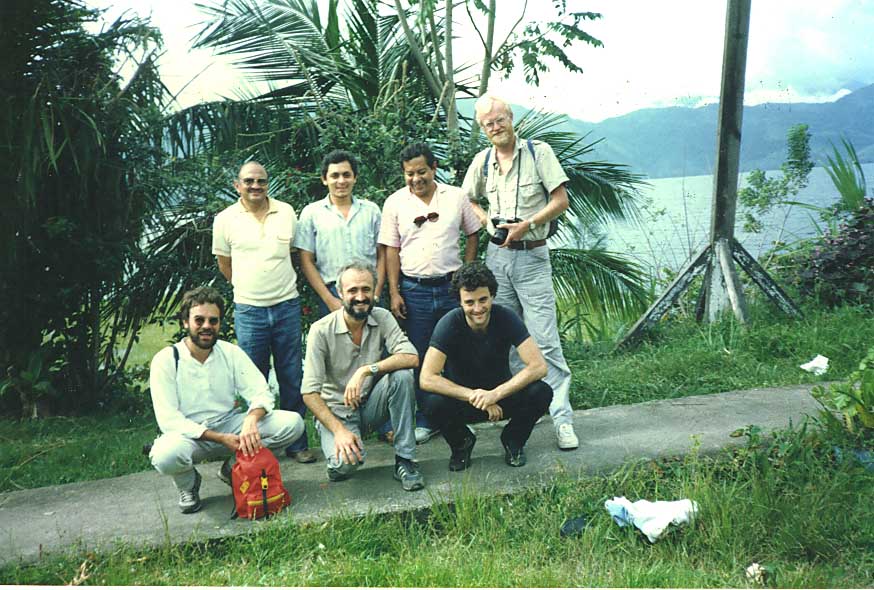 In the front row, from left to right are marchista Luc Van Ootgem, Juan Almendarez, and Peter Holding.
In the front row, from left to right are marchista Luc Van Ootgem, Juan Almendarez, and Peter Holding.
Luc was from Belgium, and was also a member of a Belgian-Honduran solidarity organization.
As the convenor of the Honduran Co-ordinating Committee of Popular Organizations, a broad
committee of unions, human rights, women's, and religious groups, Juan organized the Honduran
march committee.
Juan was also an ex-rector of the University of Honduras and was then the president of an organisation
of Central Amercian scientists. He was also on a military "hit list" at the time of the march.
Second from right in the back row is Hector Hernandez, President of the Honduran Federation of Workers (FUTH),
one of Honduras's major union organisations at the time. The two unidentified men back left are probably also
Honduran unionists. The tall man in the back row is a union official from Denmark, Ole Christensen.
Peter recalls that a member of the Danish Parliament, Eric Smith met with the marchers
in Honduras. After the march was over, Peter stayed on in the region for another year, working with the
local support groups trying to get the
International Network for Peace off the ground. The results were disappointing, but they did succeed in
sending a delegation from Panama and Honduras to Europe.
 Here Javier Romero, the Commissiones Obreros from Spain, replaces Juan Almedares in the front row.
Javier may have been a workplace delegate for a union in a car factory.
Here Javier Romero, the Commissiones Obreros from Spain, replaces Juan Almedares in the front row.
Javier may have been a workplace delegate for a union in a car factory.